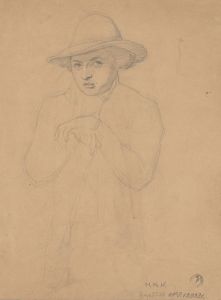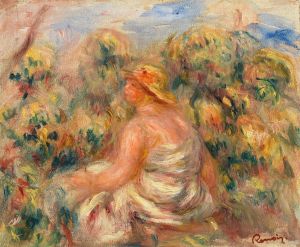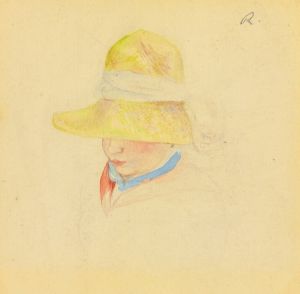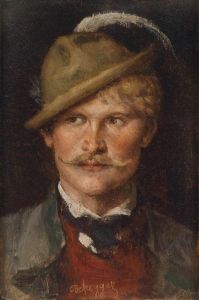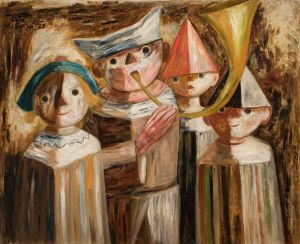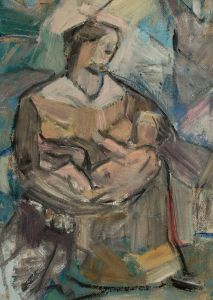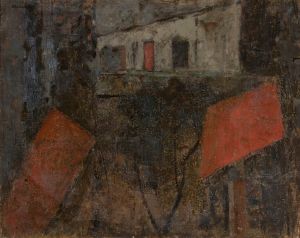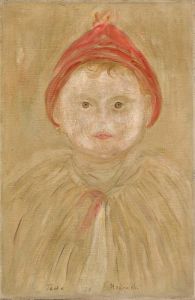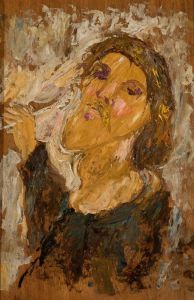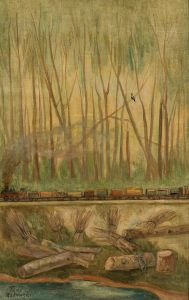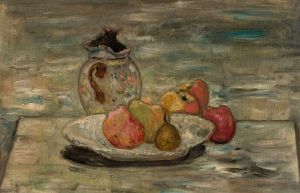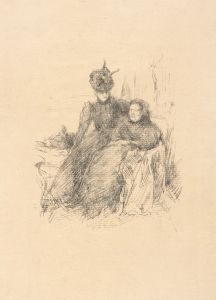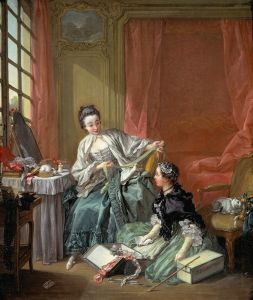
Study of a peasant in a hat
A hand-painted replica of Tadeusz Makowski’s masterpiece Study of a peasant in a hat, meticulously crafted by professional artists to capture the true essence of the original. Each piece is created with museum-quality canvas and rare mineral pigments, carefully painted by experienced artists with delicate brushstrokes and rich, layered colors to perfectly recreate the texture of the original artwork. Unlike machine-printed reproductions, this hand-painted version brings the painting to life, infused with the artist’s emotions and skill in every stroke. Whether for personal collection or home decoration, it instantly elevates the artistic atmosphere of any space.
Tadeusz Makowski was a Polish painter known for his unique style that combined elements of Post-Impressionism and Cubism, often focusing on themes of rural life and childhood. One of his notable works is "Study of a Peasant in a Hat," which exemplifies his interest in capturing the essence of everyday people and their environments.
Makowski was born on January 29, 1882, in Oświęcim, Poland. He initially studied classical philology at the Jagiellonian University in Kraków before pursuing art at the Academy of Fine Arts in Kraków. His early work was influenced by the Young Poland movement, which was characterized by a blend of modernist and national themes. In 1908, Makowski moved to Paris, where he became part of the vibrant artistic community and was influenced by the avant-garde movements of the time.
"Study of a Peasant in a Hat" is a reflection of Makowski's fascination with rural subjects, a theme that recurred throughout his career. The painting depicts a peasant, a common figure in Makowski's oeuvre, characterized by a simplicity and directness that conveys a deep respect for the subject. The peasant is shown wearing a hat, a typical accessory that not only serves a practical purpose but also symbolizes the rural lifestyle.
Makowski's style in this painting is marked by a blend of realism and abstraction. He often used geometric forms and a muted color palette, which can be seen in the way he constructs the figure of the peasant. The use of light and shadow in the painting adds depth and dimension, highlighting the textures of the clothing and the contours of the face. This approach reflects Makowski's exposure to Cubism, although he adapted it to suit his own artistic vision.
The painting is also notable for its emotional resonance. Makowski had a talent for imbuing his subjects with a sense of dignity and humanity, qualities that are evident in the peasant's expression and posture. This focus on the inner life of his subjects is a hallmark of Makowski's work and contributes to the enduring appeal of his paintings.
Throughout his career, Makowski remained committed to exploring the lives of ordinary people, particularly children and peasants. His work often features a sense of nostalgia and a longing for the simplicity of rural life, which he saw as a counterbalance to the complexities of modern existence. This thematic focus is evident in "Study of a Peasant in a Hat," where the subject is portrayed with a sense of quiet strength and resilience.
Makowski continued to live and work in France until his death on November 1, 1932. His contributions to art were recognized posthumously, and his works are held in various collections, including the National Museum in Warsaw and the Musée National d'Art Moderne in Paris. "Study of a Peasant in a Hat" remains an important example of his artistic legacy, showcasing his ability to blend traditional themes with modernist techniques.
In summary, "Study of a Peasant in a Hat" by Tadeusz Makowski is a testament to the artist's skill in capturing the essence of rural life through a unique combination of realism and abstraction. The painting reflects Makowski's deep respect for his subjects and his ability to convey their inner lives with sensitivity and insight.





